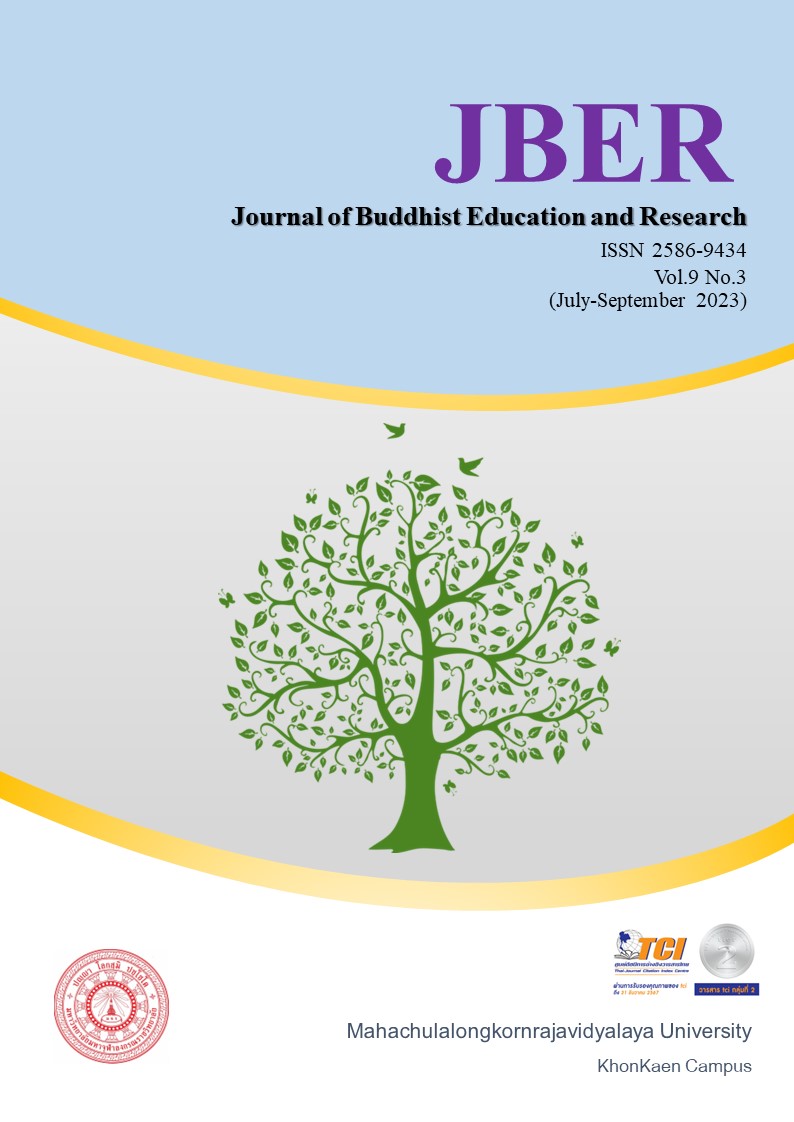FACTORS AFFECTING THE AMOUNT OF SMALL AND MEDIUM ENTERPRISES (SMEs) LOANS OF COMMERCIAL BANKS IN THAILAND
Keywords:
Business loan amount of small and medium enterprises, Loan amounts, Commercial banksAbstract
The purpose of this study was to explore factors affecting the amount of small and medium enterprises (SMEs) loan of commercial banks in Thailand. In this study the secondary data were collected from first quarter of 2005 to the 4th quarter of 2021 in total 68 quarters. This study examined six independent variables including Minimum Loan Rate (MLR), unemployment rate (UNE), non-performing loan to loans (NPL), capital adequacy ratio (CAR), liquidity coverage ratio (LCR) and private investment index. This data was analyzed by qualitative and quantitative data analysis using the Ordinary Least Square Method model.
The results showed that factors affecting the amount of small and medium enterprises (SMEs) loan of commercial banks in Thailand with statistical significance level of 0.05 in the positive was Minimum Loan Rate (MLR). Meanwhile, unemployment rate (UNE) and non-performing loan to loans (NPL) were negative correlation to loan amount of small and medium enterprises (SMEs) with an R-Square of 0.3408.
References
กรมพัฒนาธุรกิจ. (2565). Top 10 ธุรกิจน่าจับตามอง ปี 2565. สืบค้นเมื่อ 13 เมษายน 2565. จาก www.prachachat.net/economy/news-848728
กิติพงศ์ เกรียงพันธุ์. (2551). การศึกษาปัจจัยที่มีผลกระทบต่อการให้สินเชื่อของกลุ่มธนาคารพาณิชย์ไทย และกลุ่มธนาคารพาณิชย์ไทยในแต่ละขนาดในช่วงปี 2546-2550. (ปริญญาบริหารธุรกิจมหาบัณฑิต สาขาวิชาการเงิน, มหาวิทยาลัยหอการค้าไทย).
ธนาคารแห่งประเทศไทย. (2565). ข่าว ธปท. ฉบับที่ 9/2565 เรื่อง ผลการดำเนินงานของระบบธนาคารพาณิชย์ ปี 2564. สืบค้นเมื่อ 13 เมษายน 2565. จาก www.bot.or.th/Thai/PressandSpeeches/ Press/2022/Pages/n0965.aspx
ธนาคารแห่งประเทศไทย. (2565). เงินให้สินเชื่อ เงินฝาก และอัตราส่วนเงินให้สินเชื่อต่อเงินฝากของธนาคารพาณิชย์. สืบค้นเมื่อ 13 เมษายน 2565. จาก www.bot.or.th
นครินทร์ ภูมุตตะ และศิริขวัญ เจริญวิริยะกุล. (2562). ปัจจัยที่มีอิทธิพลต่อปริมาณเงินให้สินเชื่อของธนาคารกรุงเทพ ธนาคารกรุงไทยและธนาคารไทยพาณิชย์ จำกัด (มหาชน). วารสารบัณทิตวิทยาลัย มหาวิทยาลัยราชภัฏจันทรเกษม. 15(2): 95-108
เมธิดา โหสกุล. (2560). ปัจจัยที่มีผลกระทบต่อปริมาณสินเชื่อธุรกิจ. (ปริญญาบริหารธุรกิจบัณฑิต (กลุ่มวิชา การเงิน), มหาวิทยาลัยหอการค้าไทย).
สำนักงานส่งเสริมวิสาหกิจขนาดกลางและขนาดย่อม. (2564). รายงานสถานการณ์ SME. สืบค้นเมื่อ 13 เมษายน 2565. จาก www.sme.go.th/th/download.php?modulekey=215
สุนันทา พรมมาศ. (2559). ปัจจัยที่ส่งผลกระทบต่อปริมาณการปล่อยสินเชื่อของธนาคารไทยพาณิชย์ จำกัด (มหาชน). (ปริญญาวิทยาศาสตรมหาบัณฑิต (สาขาวิชาการเงิน), มหาวิทยาลัยกรุงเทพ).
อนุสรณ์ สมทา. (2553). โครงสร้างตลาดและปัจจัยที่มีความสัมพันธ์ต่อปริมาณการให้สินเชื่อของธนาคารพาณิชย์ไทย. (ปริญญาเศรษฐศาสตรมหาบัณฑิต (สาขาวิชาเศรษฐศาสตร์การจัดการ), มหาวิทยาลัยศรีนครินทรวิโรฒ).
อัครพงศ์ อั้นทอง. (2550). คู่มือการใช้โปรแกรม EView เบื้องต้น สำหรับการวิเคราะห์ทางเศรษฐมิติ. เชียงใหม่: สถาบันวิจัยสังคม มหาวิทยาลัยเชียงใหม่.
Doriana Cucinelli. (2015). The Impact of Non-performing Loans on Bank Lending Behavior: Evidence from the Italian Banking Sector. Eurasian Journal of Business and Economics. 8(16): 59-71.
Irum Saba and Rehana Kouser and Muhammad Azeem. (2012). Determinants of Non Performing Loans: Case of US Banking Sector. The Romanian Economic Journal. 15(44), 125-136.
Ken Miyajima. (2019). What influences bank lending in Saudi Arabia. Islamic Economic Studies. Emerald Publishing Limited, 27(2): 125-155.
Roseline Misati and Anne Kamau. (2017). Local and international dimensions of credit provision by commercial banks in Kenya. Banks and Bank Systems, 12(3): 87-99.
Suryanto. (2015). Non Performing Loans on Regional Development Bank in Indonesia and Factors that Influence. Mediterranean Journal of Social Science, 6(4): 280-287.
Z. Kovtun. (2017). Heterogeneous Bank Lending Responses to Monetary Policy: Empirical Evidence from Russia. Ekonomika regiona, 13(2): 616-627.





